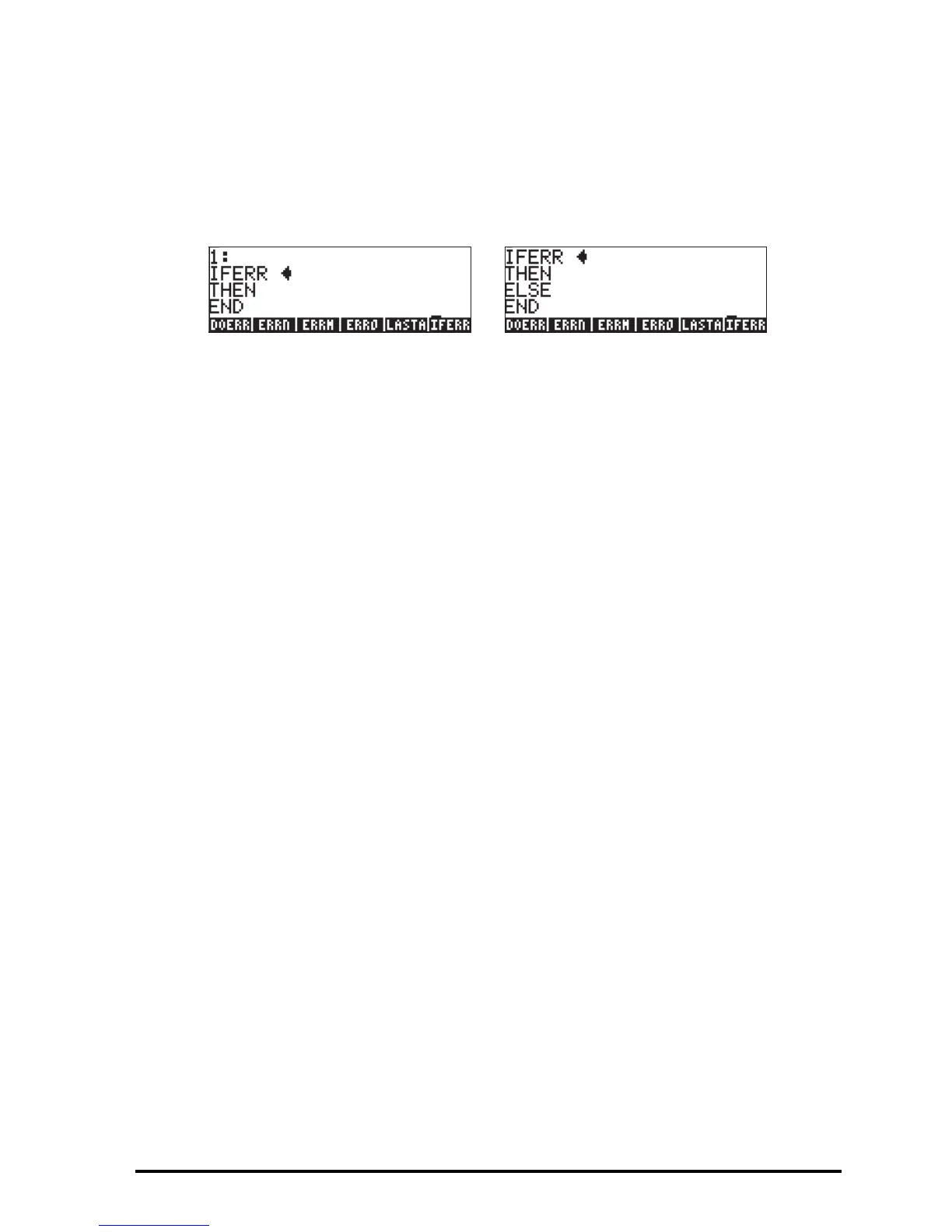Page 21-66
These are the components of the IFERR … THEN … END construct or of the
IFERR … THEN … ELSE … END construct. Both logical constructs are used for
trapping errors during program execution. Within the @)ERROR sub-menu,
entering „@)IFERR, or ‚@)IFERR, will place the IFERR structure components in
the stack, ready for the user to fill the missing terms, i.e.,
The general form of the two error-trapping constructs is as follows:
IF trap-clause THEN error-clause END
IF trap-clause THEN error-clause ELSE normal-clause END
The operation of these logical constructs is similar to that of the IF … THEN …
END and of the IF … THEN … ELSE … END constructs. If an error is detected
during the execution of the trap-clause, then the error-clause is executed.
Otherwise, the normal-clause is executed.
As an example, consider the following program (@ERR1) that takes as input two
matrices, A and b, and checks if there is an error in the trap clause: A b / (RPN
mode, i.e., A/b). If there is an error, then the program calls function LSQ (Least
SQuares, see Chapter 11) to solve the system of equations:
« A b « IFERR A b / THEN LSQ END » »
Try it with the arguments A = [ [ 2, 3, 5 ] , [1, 2, 1 ] ] and b = [ [ 5 ] , [ 6 ] ].
A simple division of these two arguments produces an error: /Error: Invalid
Dimension.
However, with the error-trapping construct of the program, @ERR1, with the same
arguments produces: [0.262295…, 0.442622…].

